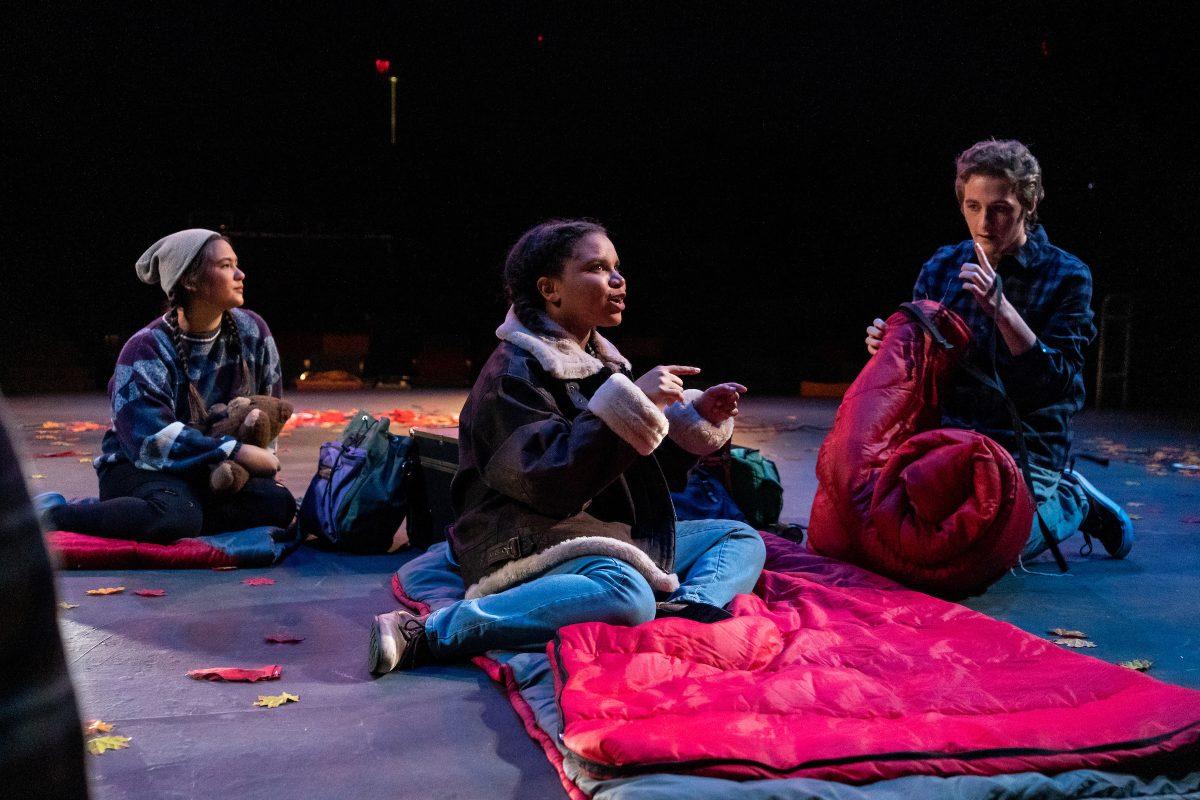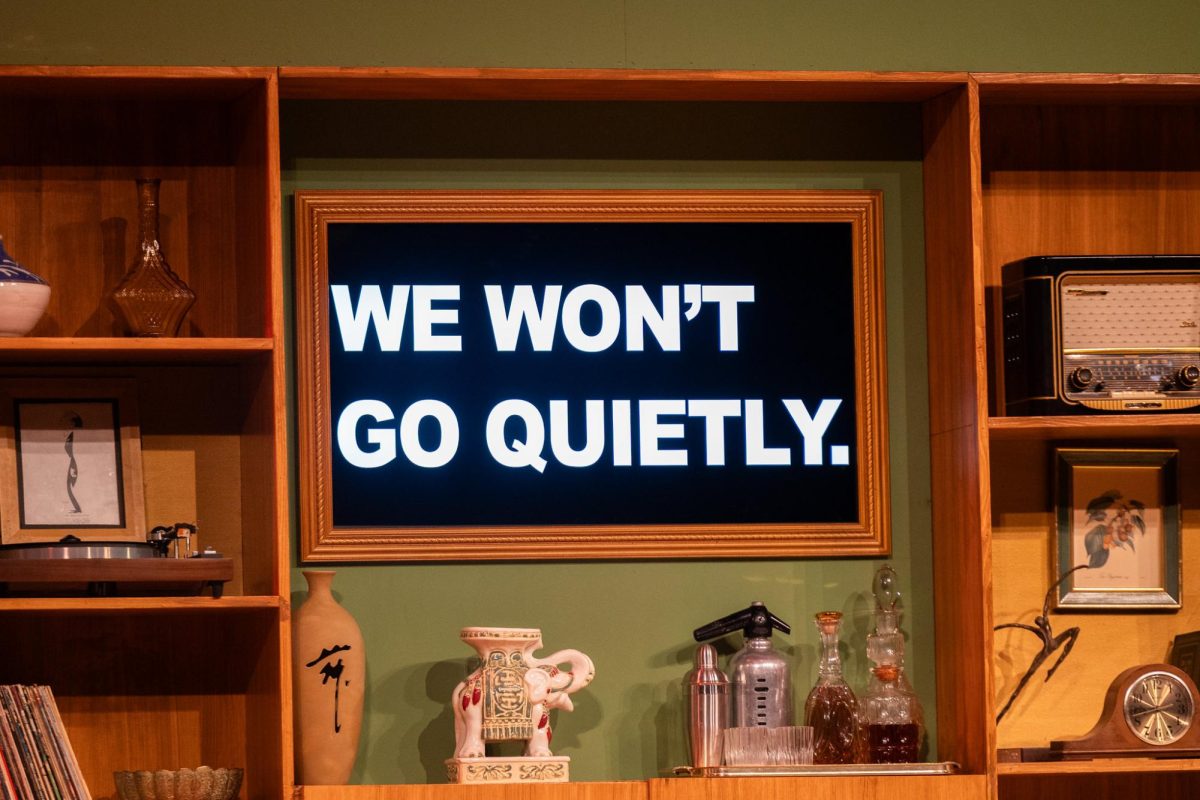Orange and red leaves cover the floor and tree branches cover the wrecked car; it looks like fall in the middle of the woods. Lanterns light up the surviving faces as they surround a campfire, all looking dismal and some shedding tears. There’s a somber mood lurking, making it clear something is wrong. Suddenly, Matt, played by Rhett Curry, lights up with the memory of a television show, beginning the journey of healing and explanation of the disaster.
“Mr. Burns” takes place somewhere in “the very near future” during a post-electric time in the United States. Audience members are directly invited into the play with on-stage seating to create the illusion of being around the campfire with the cast. The Audience is a part of the memories as the story follows Matt, Jenny, played by Régine Danaé, Maria, played by Sierra Slusiewicz, Colleen, played by Natasha Potts, Sam, played by Rae Veraflor, and Gibson, played by Ian Smith, as they try to recover from the traumas of the time through storytelling.
“This is a really hard script, it’s a challenging play. . . which is why I chose it, I love a challenge!” director Alexis Macnab said. “But absolutely everything else about it was a dream!”
In Act I, the audience learns that there were nuclear explosions and firestorms that left only handfuls of people scattered around. While the characters are clearly sad and disappointed that their loved ones are gone, they find small joys in trying to remember scenes and doing so incorrectly, from an episode of The Simpsons.
Act II moves forward seven years and the audience see’s that remembering elements of the past holds significant value. The same campers who found each other and healed together in Act I are still together, along with a new face, Quincy, played by Lindsey Abbott. They work together to put on productions that reminisce about the time before the destruction for other survivors to watch and find happiness in. However, it is also made clear that while the communities are slowly healing, there is still tragedy and corruption all around.
The two first acts had viewers laughing along with the inaccurate references to current pop-culture. The memories were imperfect, but they made for a perfect sense of naive happiness.
“I’m not sure whether to be happy or sad” one viewer Emma Hoop, senior at Sonoma State, said. “Wildfires are hard and we know that first hand. But they found a way to stay positive and I can’t stop laughing.”
The play concludes 75 years later jumping straight into the finished and successful production. The campers we from the beginning are replaced with the Simpson family. Mr. Burns, played by Smith, plots to destroy Bart’s life and is joined with the final new face Edna Krabappel, played by Evann Essert. Without directly stating it, the conclusion reveals the importance of storytelling as the jumbled scene was still a big production 75 years later.
“The last act was a lot more fun to play in because we got to play with our characters a lot more,” Ian Smith said. “It was a lot of our own ideas and that was really fun.”
The Halloween themed play fell in tune with the holiday, but the timing of the play also held other, more impactful, relevance.
Just over a year ago, Sonoma County was struck by firestorms that left many displaced and loved ones lost. Our local community was a part of a huge trauma, and everyone responded by coming together to heal. “Mr. Burns” reminded us that we are healing together while we are working to restore the neighborhoods after the fires tried to steal them away.
“It felt like a really good way to talk about the way our communities go through a disaster and the many ways in which it heals itself” Macnab said. “It really showed how we use stories to make sense of our world and then move forward.”
Although “Mr. Burns” only played through the Halloween weekend, its meaning will continue holding long-lasting value with viewers. Sonoma will continue healing and the memories of loss and recovery will tell the same story that “Mr. Burns” does– a story about the path to overcome disaster.



































